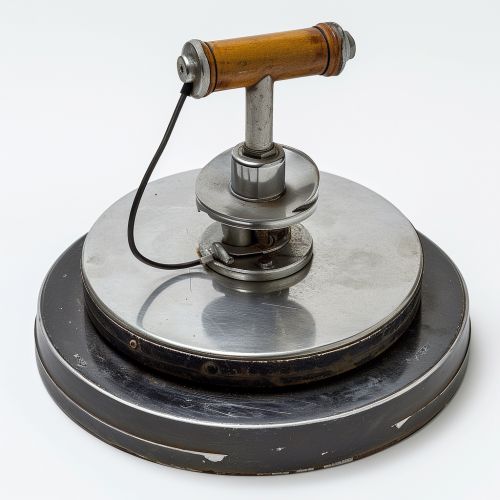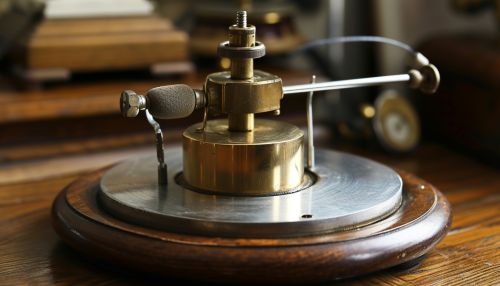Electrophorus
Introduction
The Electrophorus is a simple manual capacitive generator used to produce electrostatic charge via the process of electrostatic induction. A first version of this device was invented in 1762 by Swedish professor Johan Carl Wilcke. Electrostatics is a branch of physics that studies electric charges at rest.
History
The Electrophorus was first described in 1775 by Italian physicist Alessandro Volta, who coined its name, which means "electricity bearer" in Greek. Volta's electrophorus was a single-plate type. He made significant improvements to the design and utility of the device, which is why he is often credited with its invention.
Design and Operation
The Electrophorus consists of a dielectric plate (originally resinous substances such as pitch or wax, but in modern versions plastic is used) and a metal plate with an insulating handle. The dielectric plate is first charged through the triboelectric effect by rubbing it with fur or cloth. The metal plate is then placed onto the dielectric plate. The metal plate does not come into direct contact with the dielectric plate, so the charge is not transferred to it, but instead an opposite charge is induced.


When the metal plate is touched, the induced charge is conducted away to the ground (this can be a person's hand, for example), leaving the metal plate with a net charge of the opposite sign. When the metal plate is subsequently separated from the dielectric plate, it is left with a charge, which can be discharged or used for various experiments.
Applications
The Electrophorus is used primarily for educational demonstrations of electrostatics principles. It is a popular device in physics classrooms to demonstrate the principles of electrostatic induction and the conservation of charge. The device can produce sparks that can be seen, heard, and felt, providing a sensory experience for students learning about electrostatics.
The Electrophorus has also been used in practical applications. For example, it was used in early wireless telegraphy systems for generating the high voltage required to produce radio waves.
See Also
- Leyden jar - A type of capacitor that stores static electricity between two electrodes.
- Van de Graaff generator - A machine used to generate very high voltages.
- Triboelectric effect - The generation of electricity through the contact of different materials.
